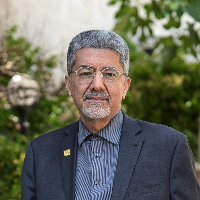Theoretical Study of the Concept of Neighborhood and its Redefinition with Emphasis on the Conditions of Urban Neighborhoods of Iran
Author(s):
Abstract:
Introduction
In the present process of urbanization and urban development, the utilization of participatory strategy and bottom-up planning has been agreed by most of urban planners and managers to be essential. Realizing this kind of urban planning and management, we need the subdivision of the urban space into smaller units. Neighborhood can be considered as the basic unit for participatory planning. This concept has some similarities and differences from the meanings of the words such as community, society, local community, space and place. In this paper, it has been tried to describe the definitions of neighborhood and its dimensions with regard to various suggestions and definitions based on different points of views, to reach common principles and consensus of opinions for neighborhood. Also, it is intended to get an overall glance of scientific suggestions on the concept of neighborhood conformable to historical investigations and legal basis in Iran cities, in order to reach a concept closer and more common to the present reality of urbanism and urban development. Methodology
The present study has been done based on qualitative method. Since the aim was to understand the neighborhood conceptual changes in different scientific fields and scientific urban & urbanism literature, documentary observation was used. Also the analysis of the documents of the study was done in two Methods
a) internal analysis, b) external analysis. In internal analysis, the sources and documents containing a view to subjects, recognition measurements, scientific fields and theoretical & philosophical thoughts were considered. In external analysis, the connection between container documents and social and political reality of society was considered. Resource and Discussion
The result of this study has shown that, Neighborhood is a term which different fields such as sociology, geography and urban planning have defined and utilized in different ways on the basis of theoretical and contextualized differences. However, there are common issues in these variations which help us to draw the concept of neighborhood. Neighborhood has some aspects in common with concepts like community, society, place, space, vicinage and etc. Community and society, as basic concepts in social geography and sociology, have some characteristics. Specific geographical territory and interrelationships between its residents are considered as their common aspects. The distinction between these two concepts is that the ''community'' is formed upon emotional and organic linkages and the ''society'' is formed upon thoughts and conventional relationships. The concepts of space and place, also similar concepts, have some characteristics which are important in the clarification of the concept of ''neighborhood''. The change of views from mere physical perspective to social and physical perspectives of space and place is the cause of social activities running in the figure of city. This view is noteworthy in defining and conceptualization of neighborhood. In this sense, the concept of local community is formed upon common relations and interests and also place and specific geographical borders, which clarifies some principles for defining the concept of neighborhood. From the urban sociology point of view, neighborhood is a social unit including people with similar social, cultural and economical characteristics and residents who have social solidarity and local interrelationships. From the social sciences point of view, a ''neighborhood'' signifies a residential area with residents who have interrelationships between them. The approach of urban and social geographers in defining the concept of ''neighborhood'' is based upon having specific place and social relationships between its residents. Urban planning, in a different framework, defines neighborhood as an identifiable area of a city which has several land-uses for supplying the needs of its residents. Also this concept has considerable aspects in frame of functions and characteristics expected from neighborhood. The study of the concept of neighborhood in different scientific areas indicates that having clear borders and boundaries, sense of solidarity and reciprocity among residents, collective identity and sharing goals, integration of space and activity, relative independency and proportion of the population, are common themes in the defined neighborhood; Although based on expected characteristics and criteria, population concepts, infrastructure, political, sensory, social and environmental principles are to be considered as basic concepts. Recognition of neighborhood in cities of Iran indicates that ethnic, religious, racial and other characteristics and criteria in the past and the present official and formal principles have a determining role in definition and determination of the boundaries of the neighborhood. Conclusion
An integrated spatial area, existence of physical boundaries based on subjective and/or objective cognition, sense of place, social belonging and face to face relationships, as well as containing daily facilities and services, could be expounded as common elements in the redefinition of the concept.Keywords:
Language:
Persian
Published:
Human Geography Research Quarterly, Volume:42 Issue: 72, 2010
Page:
83
magiran.com/p792778
دانلود و مطالعه متن این مقاله با یکی از روشهای زیر امکان پذیر است:
اشتراک شخصی
با عضویت و پرداخت آنلاین حق اشتراک یکساله به مبلغ 1,390,000ريال میتوانید 70 عنوان مطلب دانلود کنید!
اشتراک سازمانی
به کتابخانه دانشگاه یا محل کار خود پیشنهاد کنید تا اشتراک سازمانی این پایگاه را برای دسترسی نامحدود همه کاربران به متن مطالب تهیه نمایند!
توجه!
- حق عضویت دریافتی صرف حمایت از نشریات عضو و نگهداری، تکمیل و توسعه مگیران میشود.
- پرداخت حق اشتراک و دانلود مقالات اجازه بازنشر آن در سایر رسانههای چاپی و دیجیتال را به کاربر نمیدهد.
In order to view content subscription is required
Personal subscription
Subscribe magiran.com for 70 € euros via PayPal and download 70 articles during a year.
Organization subscription
Please contact us to subscribe your university or library for unlimited access!



